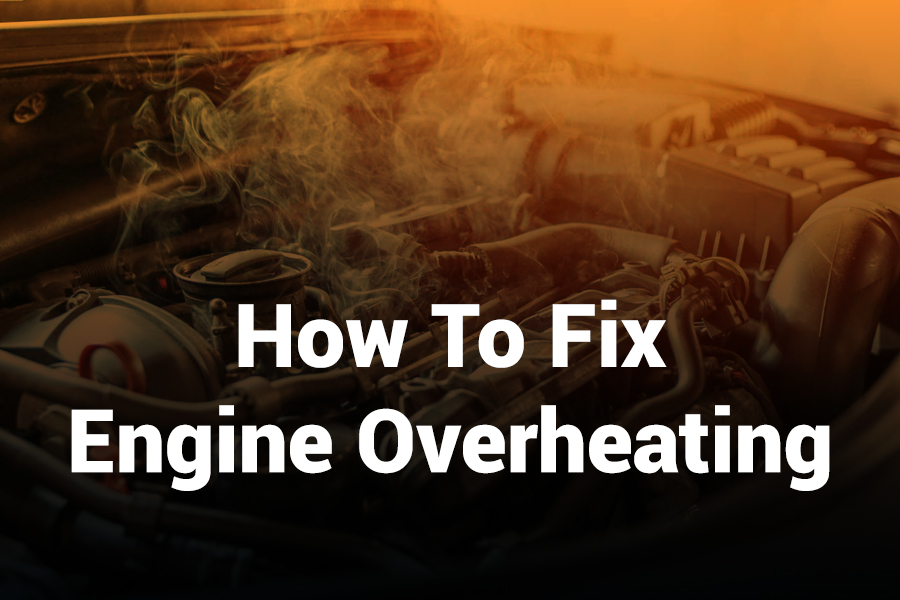Your engine overheating is a serious signal you should not ignore. When temperatures climb and your ride starts acting up, you need clear, effective actions.
In this article you will learn how to identify overheating causes, how to take immediate action safely, and how to fix underlying issues so you won’t be stranded.
Why Engine Overheating Happens
The cooling system in your vehicle has a clear job: prevent heat from building up in your engine. When it fails you face issues like warped components or blown head gaskets. Variable data show that even a small coolant drop or weak fan can trigger overheating quickly. These failures fall into a few major categories:
- Low coolant or antifreeze
- Faulty water pump or belt
- Blocked radiator or fans
- Stuck thermostat
- Low engine oil or poor lubrication
Recognizing the Warning Signs
Spotting overheating early gives you a chance to act before major damage occurs. Watch for these clear signals:
- The temperature gauge needle hits the red zone or “H”.
- Steam or white smoke rises from under the hood.
- A sweet smell (coolant) or burning smell (oil or rubber).
- Loss of power or the engine slipping into limp mode.
- Warning lights such as “Check Engine” or temperature icons.
Immediate Actions When Your Engine Overheats
If you notice overheating while driving, follow these steps right away:
- Pull over in a safe, well-ventilated spot and turn off the engine.
- Turn off air conditioning and switch your heater to full-blast to divert heat away.
- Wait at least 15 to 30 minutes for the engine to cool fully before opening the hood.
- Once cooled, check the coolant reservoir level. If it’s low and safe to do so, top up with a proper mix of antifreeze and water (typically 50/50).
- Monitor the gauge when you restart. If the engine temperature climbs again, stop and call for a tow or professional help.
Avoid continuing to drive while your engine is hot; that often means causing permanent damage.
Step-by-Step Fixes for Common Causes
Here is a breakdown of key issues and how to fix them:
Coolant Level and Quality
If coolant is low or degraded you lose the fluid’s ability to carry away heat. After the engine cools:
- Check the reservoir once you can safely open the cap.
- Add the correct coolant type per your owner’s manual.
- If fluid looks rusty, oily or contaminated, plan a full flush and refill.
Thermostat Malfunction
The thermostat regulates coolant flow. If it sticks closed the engine cannot cool. Signs you might have a bad thermostat: temperature rises quickly, or stays high. Fix: replace the thermostat and gasket, then bleed air from the system.
Water Pump and Drive Belt Issues
The water pump circulates coolant throughout the engine and radiator. If it fails:
- Look for coolant leaks around the pump or front engine area.
- Listen for grinding or whining noise.
- Check the serpentine belt for wear; if broken or loose it affects pump operation. Fix: replace pump and belt if needed.
Radiator and Fan Problems
Heat must escape via the radiator and airflow must be adequate. Issues include:
- Blocked radiator fins or debris inside radiator core.
- Radiator fan not turning on or clogged with dirt.
- Leaks in the radiator or hoses. Fix: flush radiator, replace fan motor or radiator if cracked or corroded.
Leaks and Hose Failures
Any drop in coolant due to leaks will degrade the whole cooling system. Signs include coolant puddles, low coolant warnings, or air bubbles in the system. Fix: inspect hoses and clamps, replace worn hoses, tighten connections.
Low Engine Oil or Poor Lubrication
Engine oil helps carry away about 75 % of heat produced. If oil is low or old you increase heat risk. Fix: check oil level and quality, change oil and filter regularly per manufacturer recommendation.
Preventing Engine Overheating in the Future
A big part of fixing overheating is preventing it from happening again. Use these best practices:
- Check coolant level and condition every few months and before long trips.
- Flush and replace coolant every 2-5 years depending on type.
- Replace belts and hoses at scheduled intervals or if you spot cracking or wear.
- Regularly inspect radiator fins and clean debris.
- Ensure radiator fan works and wiring connections are intact.
- Maintain proper oil levels, change oil per schedule, and use high-quality oil.
- In hot weather or heavy towing conditions reduce heavy AC usage and watch engine temperature closely.
- If your vehicle goes into limp mode or temperature spikes, stop driving immediately.
When to Get Professional Help
Some overheating issues become too complex for a DIY fix. You should call a professional mechanic if:
- You suspect a blown head gasket (white smoke, coolant mixing with oil, bubbling in reservoir).
- You see a cracked engine block or warped cylinder head.
- Your vehicle repeatedly overheats despite basic checks.
- Repairs require special tools, diagnostics or disassembly beyond simple parts.
Cost Implications of Overheating
Addressing overheating early is cost-effective. Minor repairs like replacing a thermostat or topping off coolant may cost a few hundred dollars. Major damage from overheating, such as head gasket failure or engine block cracks, can run into thousands of dollars or require full engine replacement.
Final Thoughts
When your engine overheats you must act swiftly and wisely. Recognize the warning signs, follow safe immediate steps and address root causes such as coolant level, thermostat, water pump, radiator or oil issues.
With proper maintenance you can avoid the high cost and hassle of severe engine damage and enjoy reliable vehicle performance for years. Your vigilance today keeps you cool tomorrow.

